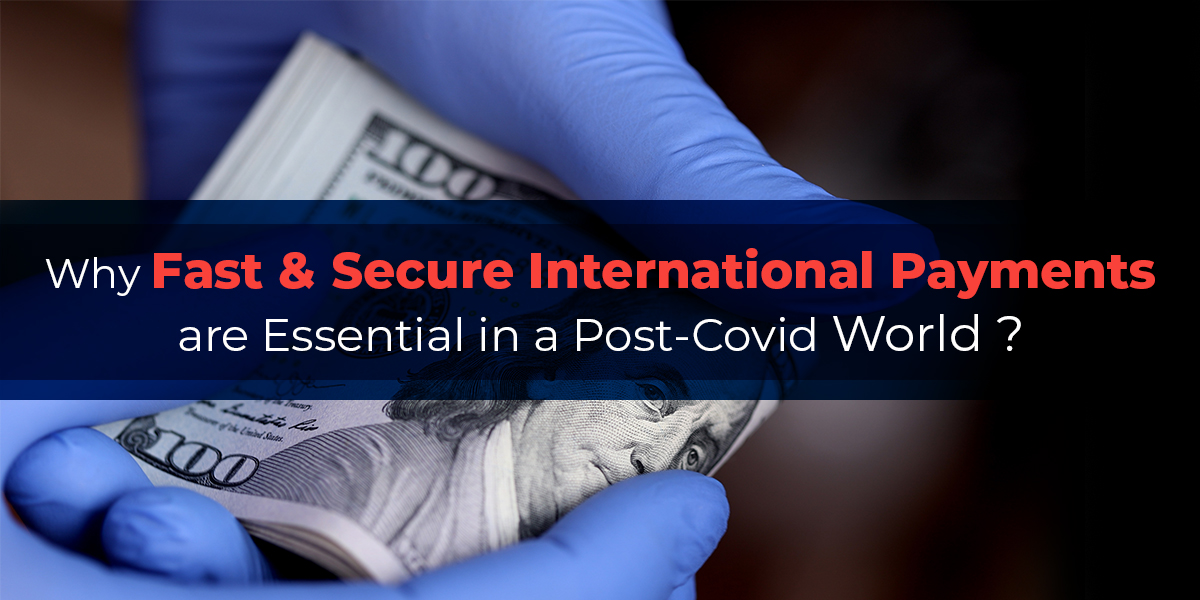
Why Fast and Secure International Payments are Essential in a Post-Covid World? - Buckzy Payments Inc.
The COVID-19 pandemic has significantly impacted the worldwide payment system. With businesses’ income streams constricted, treasury departments are working to improve the transparency of incoming funds and keep payments to suppliers flowing. Understanding the impact of the crisis on money velocity will aid businesses in recalibrating their business models in the post-COVID era.
In light of the disruption and other challenges caused by the pandemic, it’s no wonder that receiving money in a timely fashion is more vital than ever for businesses of all sizes. Businesses began to appreciate the circumstances we were in as obtaining cash became a major priority over the last year, which is why businesses were willing to re-negotiate payment to help manage cash flow in light of COVID-19.
The changes forced upon businesses and individuals alike by the pandemic have pushed countries worldwide to modernize their payment systems with electronic payment options, in order to keep commerce moving and sustain economic growth.
Using Embedded Payments in the B2B Environment
Embedded payments are essential to satisfying the needs and expectations of digital-first buyers since they happen invisibly in the background. Uber is one of the best B2C instances of embedded payments. When you exit the vehicle, you don’t have to do anything physical to finish the transaction: the software simply recognizes that the ride is finished and the payment is processed automatically.
In a B2B environment, you need infrastructure in place to ensure that customers can check out quickly and easily. Businesses must provide certain crucial aspects to make embedded payments a reality:
- Options for invoicing and payment terms
- Customer underwriting that is quick and transparent
- Infrastructure that’s based on application programming interfaces (APIs) and data
- Robust onboarding, as well as other digital-first products
- Accounts payable procedures that are straightforward
- Strong credit application fraud and identity theft detection measures
Businesses must also consider the possibility of online fraud. While efficiency attracts clients, a lack of security repels them. The purpose of any B2B embedded payments infrastructure should be to combine speed and security so that a customer can securely establish a shopping cart, choose their invoice, and pay with whichever credit cards they prefer in a few clicks. Data aggregation in the background aids this process by directing where the data should go.
The Economist Intelligence Unit’s Latest Report
In its latest research report, the Economist Intelligence Unit offers advice on what businesses can do to capitalize from the digital payments transformation and how governments and regulators can foster innovation in the industry.
The following are some of the report’s key findings:
Providers of payment platforms must transition to digital payment platforms. They’ll need to build more capacity to meet the rising demand for digital payment services, as well as opportunities to move clients to higher-margin financial services. They must also account for the increased expenses and complexities of regulatory compliance for digital payment methods.
When creating new standards, regulators must take a proactive, multi-level approach to technical advances and carefully monitor any financial risks inside digital payment systems.
Firms and service providers in the surrounding areas must quickly alter their operations to take advantage of these advances. Improving the compatibility of their digital platforms and implementing APIs to allow the usage of embedded-payment systems should be part of their plans.
Swarup Gupta, Industry Manager and the report’s author, said:
“The pandemic has sped up the adoption of digital payments, particularly in cash-dependent developing economies. Mobile payments for e-commerce have been particularly popular in countries with high smartphone penetration, and consumers and retailers are reluctant to handle cash for fear of spreading the virus. Governments have also given a boost to digital payments by using this route to deliver cash handouts and support economic growth”.
How We Can Learn From China and the SARS Epidemic?
China’s experience during the 2003 SARS epidemic aided the country’s adoption of digital payments and e-commerce. Because people refused to meet in person, SARS drove a permanent shift in behavior: customers trapped at home had to turn to previously untrustworthy e-commerce sites. At the same time, Chinese enterprises adopted e-commerce for sales.
That same year, Alibaba established Taobao, its first consumer-facing e-commerce website, and shortly after, Alipay, to address payment and trust issues that were stifling the growth of online shopping.
Ten years before SARS, the Chinese government’s “Golden Projects” initiative created an important basis for online payments in 1993. The Golden Card Project produced a single payment card system, and the Golden Customs Project linked customs stations through a national electronic data interchange (EDI) system to facilitate paperless trade as the Golden Bridge Project built out internet networks. When SARS struck in 2003, the foundations were already in place for digital payments to take off.
China’s thriving digital economy relies heavily on digital payments. Scanning a QR code lets you make contactless payments to vendors, taxi drivers, and even beggars and temples. Mobile payments and online banking can be used to pay for daily necessities such as internet fees, phone bills, rent, and utilities. Mobile payments are also accepted as a payment mechanism by governments at all levels.
The Bottom Line
As China’s experience with SARS has proven, the world will undoubtedly become more digital after COVID-19. To reap the benefits of these developments, countries behind in digital payments should develop their identity, internet, and banking infrastructure, as China did. It is also critical for smaller nations to develop a local payments system that is based on global principles and which is compatible with the rest of the world so as to fully participate in the international economy.
Now is the time for governments, corporations, and individuals to embrace the financial services of the future as global markets begin to reopen. It’s no longer an issue of whether customers will accept e-commerce and contactless payments – it’s a question of how easy and fast they will do so.
